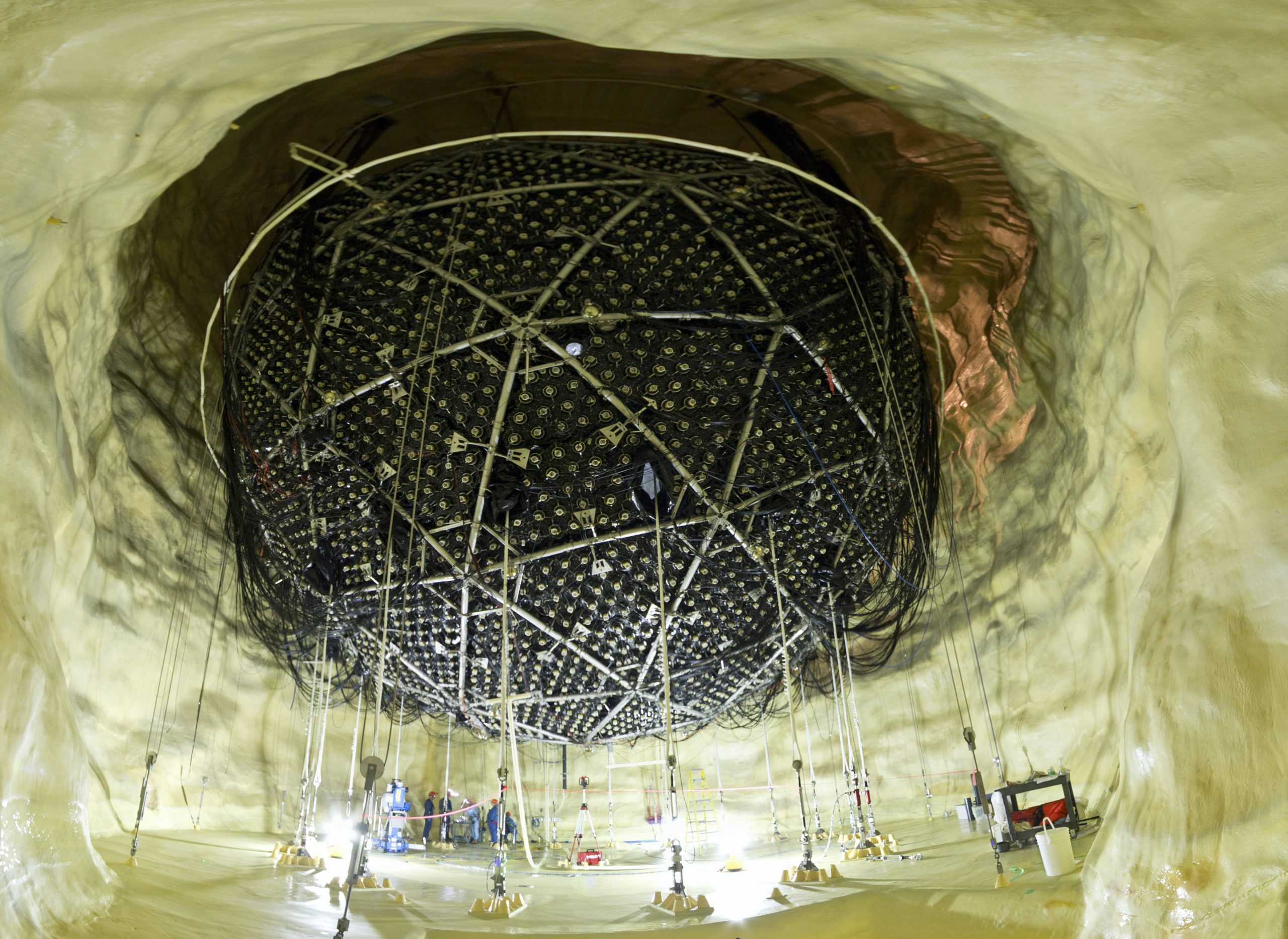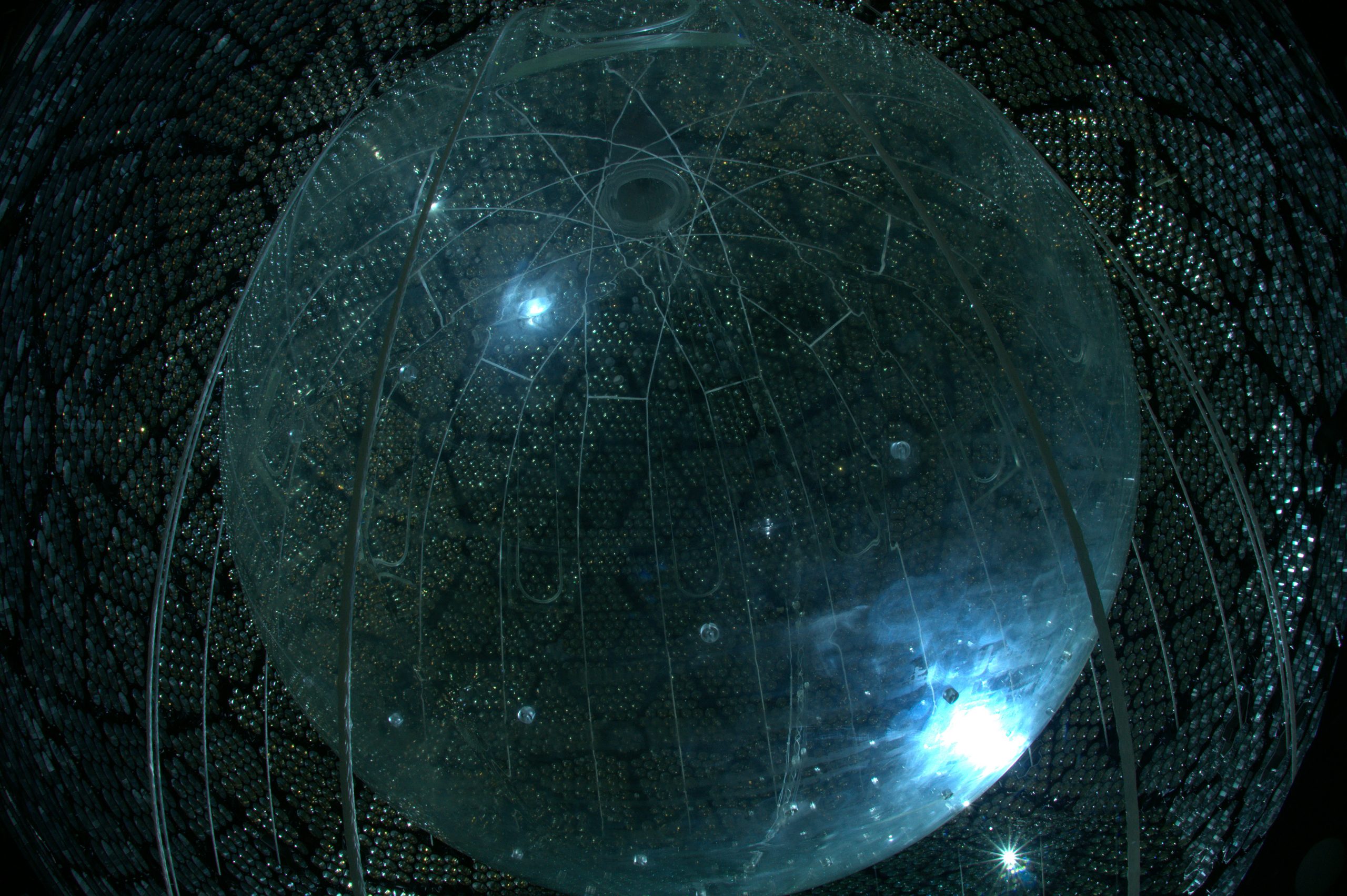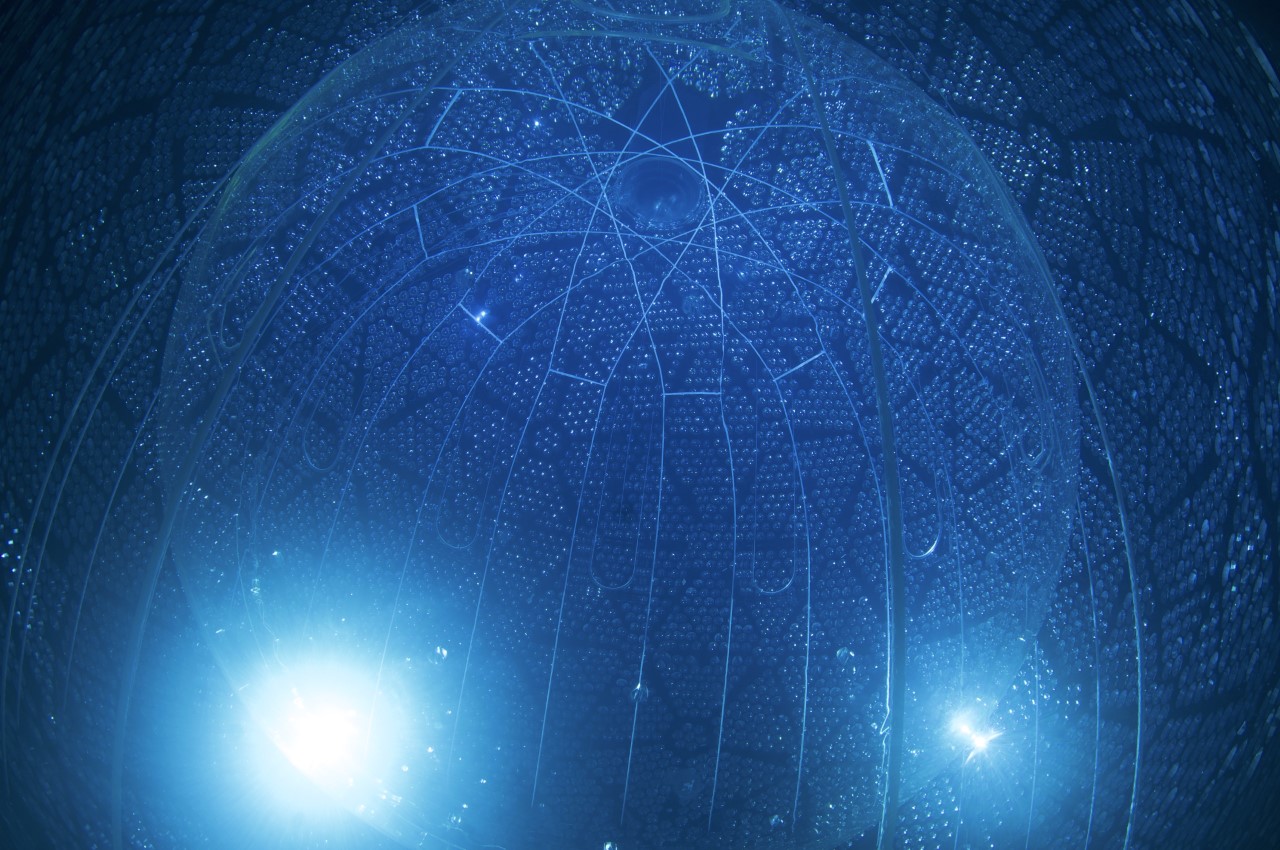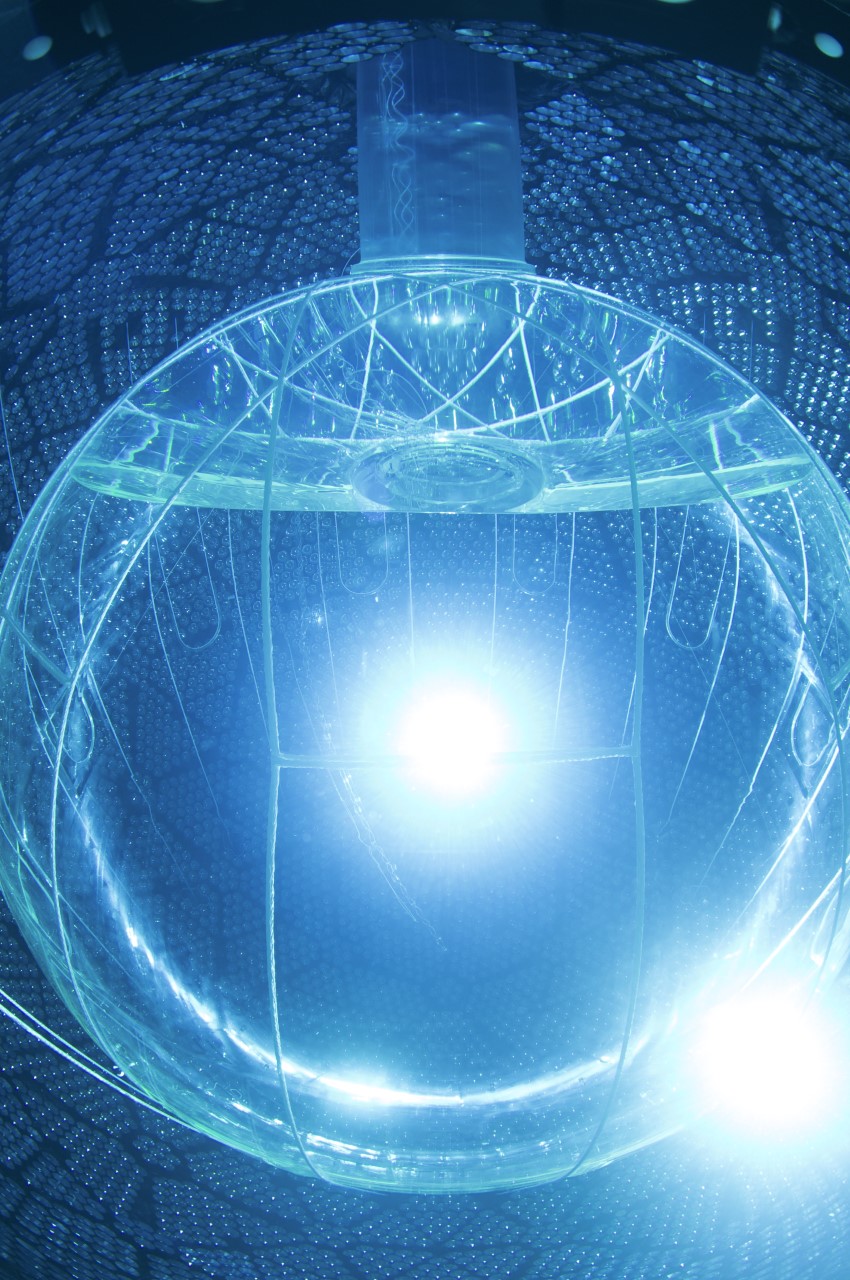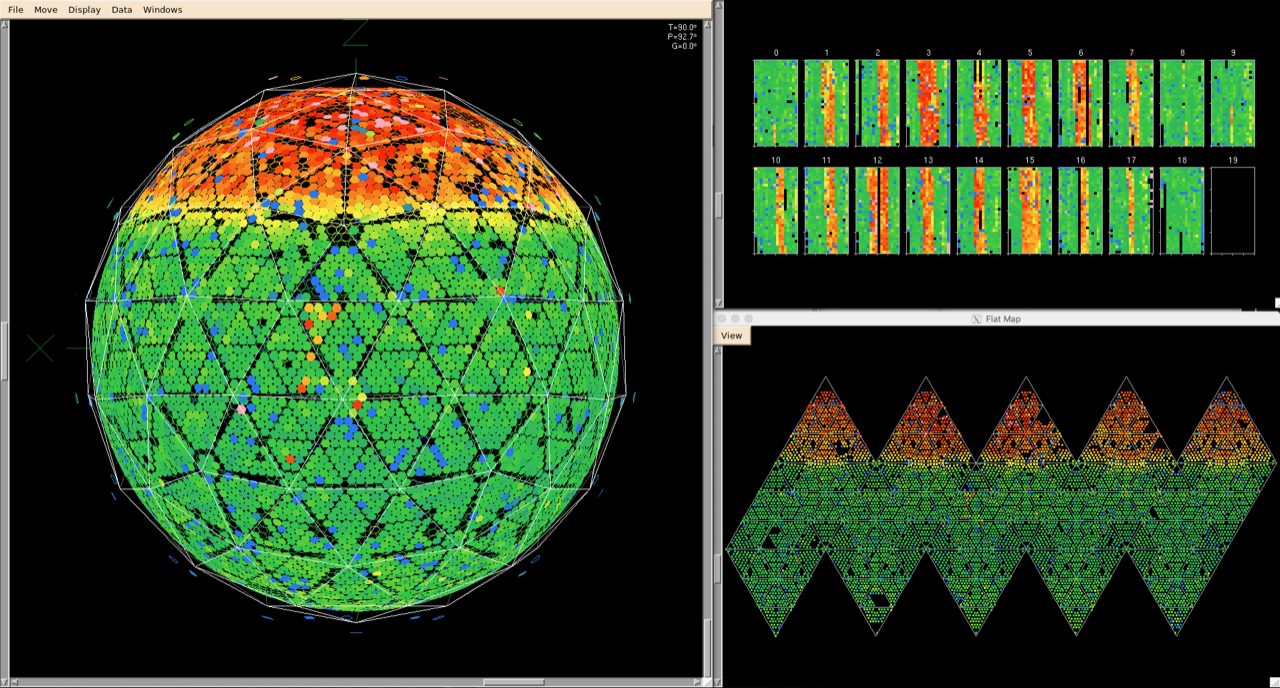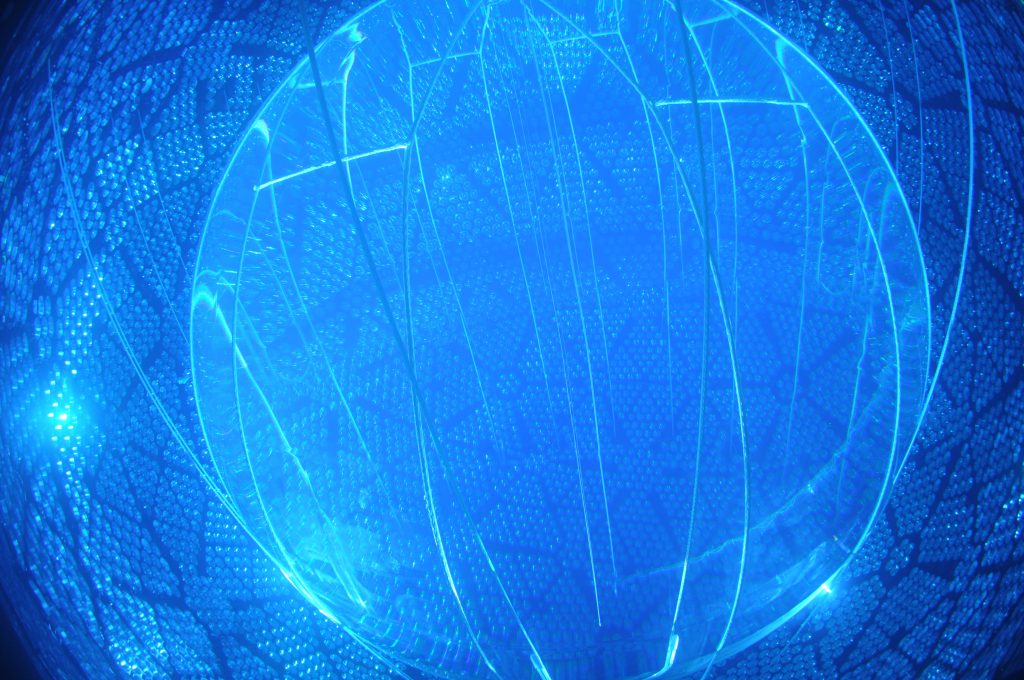
Neutrinos
SNO+ uses a liquid scintillator to detect neutrinos. When a neutrino hits the detector it creates charged particles. When these particles hit the scintillator it gives off light which is detected by thousands of sensors surrounding the vessel. Tellurium will also be added to the scintillator in the future in hopes of detecting neutrinoless double beta decay.
Did you know?
- The liquid scintillator in SNO+ is lighter than regular water, while the heavy water in SNO was heavier. This means the vessel now has ropes holding it down instead of lifting it up.
- A company in Quebec produces the liquid scintillator used in SNO+.
- SNO+ researchers paddled around inside the vessel in small inflatable dinghies to inspect the acryic walls.
